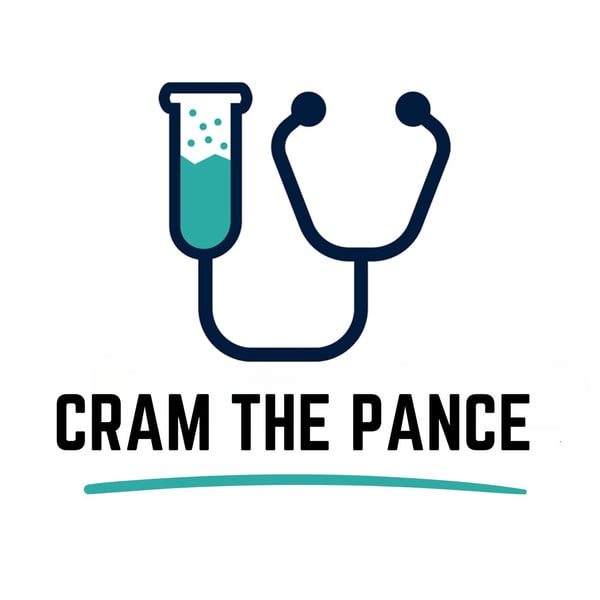S1E55 Polycystic Ovary Syndrome (PCOS)
Cram The Pance
Cram The PANCE
5 • 972 Ratings
🗓️ 9 July 2025
⏱️ 25 minutes
🧾️ Download transcript
Summary
Review for your PANCE, PANRE, Eor's, Physician Assistant exams, Medical, USMLE, Nursing Exams.
Merchandise Link:
https://cram-the-pance.creator-spring.com/
►Paypal Donation Link: https://bit.ly/3dxmTql (Thank you!)
Included in review: Pathophysiology, PCOS symptoms ,PCOS diagnosis, PCOS treatment, PCOS infertility, Rotterdam criteria, LH/FSH imbalance, Hyperandrogenism, Anovulation, Insulin resistance in PCOS, Letrozole, Clomiphene, PCOS vs NCCAH, PCOS ultrasound findings, 17-hydroxyprogesterone, PCOS and endometrial hyperplasia, Combined estrogen-progestin oral contraceptives, Medical mnemonics for exams
Become a supporter of this podcast: https://www.spreaker.com/podcast/cram-the-pance--5520744/support.
Transcript
Click on a timestamp to play from that location
| 0:00.0 | All right, so let's talk about polycystic ovary syndrome before we get started. |
| 0:03.5 | As always, thank you so much for the support. |
| 0:05.7 | Thank you. |
| 0:06.2 | Thank you. |
| 0:06.3 | Thank you so much. |
| 0:07.2 | All right, let's talk about polycystic ovary syndrome or picos, as I like to call it. |
| 0:11.5 | So polycystic ovary syndrome, the name quite literally means a syndrome of many cysts of the ovaries. |
| 0:16.9 | So you might think that that's all this is, but in actuality, you don't even need to have polycystic |
| 0:21.1 | ovaries to be diagnosed, and the fluid-filled structures in the ovaries, they're not even true cis, |
| 0:25.3 | but we'll talk more about that later. So PICOS is one of the most common endocrinopies in women |
| 0:29.8 | of reproductive age. It affects between 6.5 and 10% of all women of reproductive age. Let's go ahead and get started with the patho first. So the patho is pretty complex, multifactorial. There's a lot going on, so we'll keep it focused on what you need to know, some key concepts or trends that we typically see in patients with PECOS. So starting with your LH levels. So PECOS patients have altered LH levels with relatively higher serum lutinizing hormone concentrations relative to FSAH |
| 0:56.5 | concentrations. This is just a small component of the whole picture, but a part I think is important |
| 1:01.2 | to understand. So let's do a quick review of a normal functioning hypothalamic pituitary ovarian |
| 1:06.5 | axis. In a normal HPO axis, the hypothalamus releases GnRH in a pulsatile manner, stimulating the anterior |
| 1:13.3 | pituitary to secrete LH and FSAH. LH goes down and acts on the Thika cells in the ovary, promoting |
| 1:19.6 | androgen production, primarily andriston-dione, while FSA-stimulates granulosis cells to produce |
| 1:24.7 | aromatase. |
| 1:25.9 | Romatase is an enzyme that converts these androgens into estrogen, specifically estradiol. So as this process goes on, a dominant follicle |
| 1:33.5 | develops, fshaeculates the follicle to develop, rising estrogen levels trigger positive feedback |
| 1:39.0 | on the pituitary, leading to a surge in LH, which induces ovulation. Most of this you probably |
| 1:44.0 | already know. |
| 1:45.1 | After ovulation, progesterone from the corpus luteum provides negative feedback, slowing down |
... |
Please login to see the full transcript.
Disclaimer: The podcast and artwork embedded on this page are from Cram The PANCE, and are the property of its owner and not affiliated with or endorsed by Tapesearch.
Generated transcripts are the property of Cram The PANCE and are distributed freely under the Fair Use doctrine. Transcripts generated by Tapesearch are not guaranteed to be accurate.
Copyright © Tapesearch 2025.

